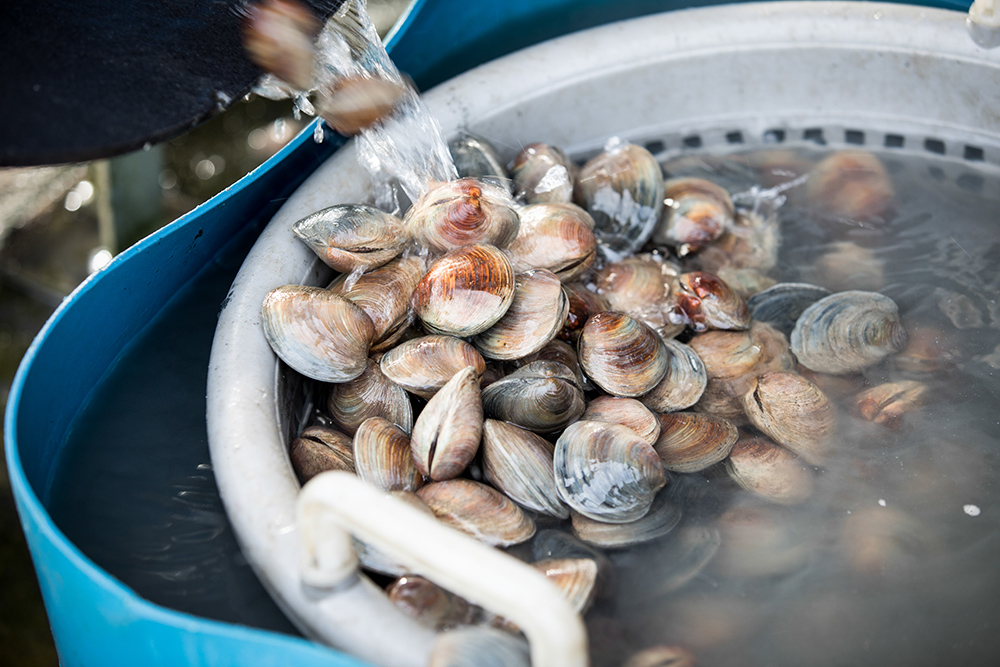Spraying soapy water on your landscape plants can keep deer from munching them, say University of Georgia experts. Just don't expect it to be a perfect solution.
"When deer destroy my newly planted camellias or munch my day lilies and hostas to the ground, I get angry," saidÿ Gary Wade, a UGA Extension Service horticulturist.
But Wade shares a neighborhood with a high number of deer. So he's usually willing to try a deer-repellent remedy, especially if others have found it useful. He likes a new soap trick he learned from a fellow Athens, Ga., gardener and deer hater.
"She places a bar of Irish Spring soap in a bucket and fills it with water," Wade said. "Once a week, she fills a sprinkling can half-full with the soap solution and dilutes it with an equal amount of clean water. She sprinkles this on all her sensitive plants."
So far, so good, say the Athens gardeners.
"I've tried it for the past month with great success," Wade said. "I now have beautiful leaves on my hostas instead of bare stems. And my day lilies have bloomed for the first time in five years."
One bar of soap, he said, will last about a week. "It's only been a month since I implemented my soapy warfare," Wade said. "But I've seen a noticeable decrease in damage. I apply the soap solution to sensitive plants once a week and again immediately after rain."
Jeff Jackson, a UGA wildlife specialist with the D.B. Warnell School of Forest Resources, said the remedy will work best if you realize its effect isn't likely to last.
"Deer repellents are all temporary at best," Jackson said. "No matter what it is, sooner or later, for one reason or another, the deer will eat your plants anyway."
If you want a repellent to work 365 days a year, it's likely to fail now and then. "If it fails even for one day," he said, "the plants will get another grazing."
Repellents work, he said, where plants need to be protected for a few weeks or so, until they have passed their vulnerable time or until the harvest is in.
"In the case of flower blooms," he said, "a repellent might be your answer, especially if the blooming period is short."
Another choice, Jackson said, is to use plants the deer don't like.
"When most people get a wooded lot, they clean out all the adapted vegetation," he said. "Then they bring in store-bought deer 'dessert.'"
But not every plant is good deer food. "It's possible to go into landscapes where deer are abundant and see green plants all around," he said. "The deer decide what plants will live."
For a list of deer-resistant plants, contact the county Extension Service office. Or check the World Wide Web at www.ces.uga.edu/Agriculture/horticulture/deer.html.
Another option is to fence the deer out. For a large area, he said, try an electric fence with a single wire 30 inches off the ground.
"Smear the entire wire with peanut butter," he said. "Mark the fence with rags eight to 10 feet apart so deer see it. They'll check out the new fence and smell the peanut butter. They touch their noses to it and give it a lick. It's sort of an education fence. It's a cost-effective, but not deer-proof, fence."
Deer will likely run right through or jump over an unbaited wire, he said.
A final choice, and the one most likely to work, is to remove the deer. "That mostly means having licensed wildlife experts shoot them after dark with spotlights and precision rifles," he said.
But first a community has to agree to remove the deer. "Finding consensus is the key," Jackson said. "That's harder than removing the deer."






